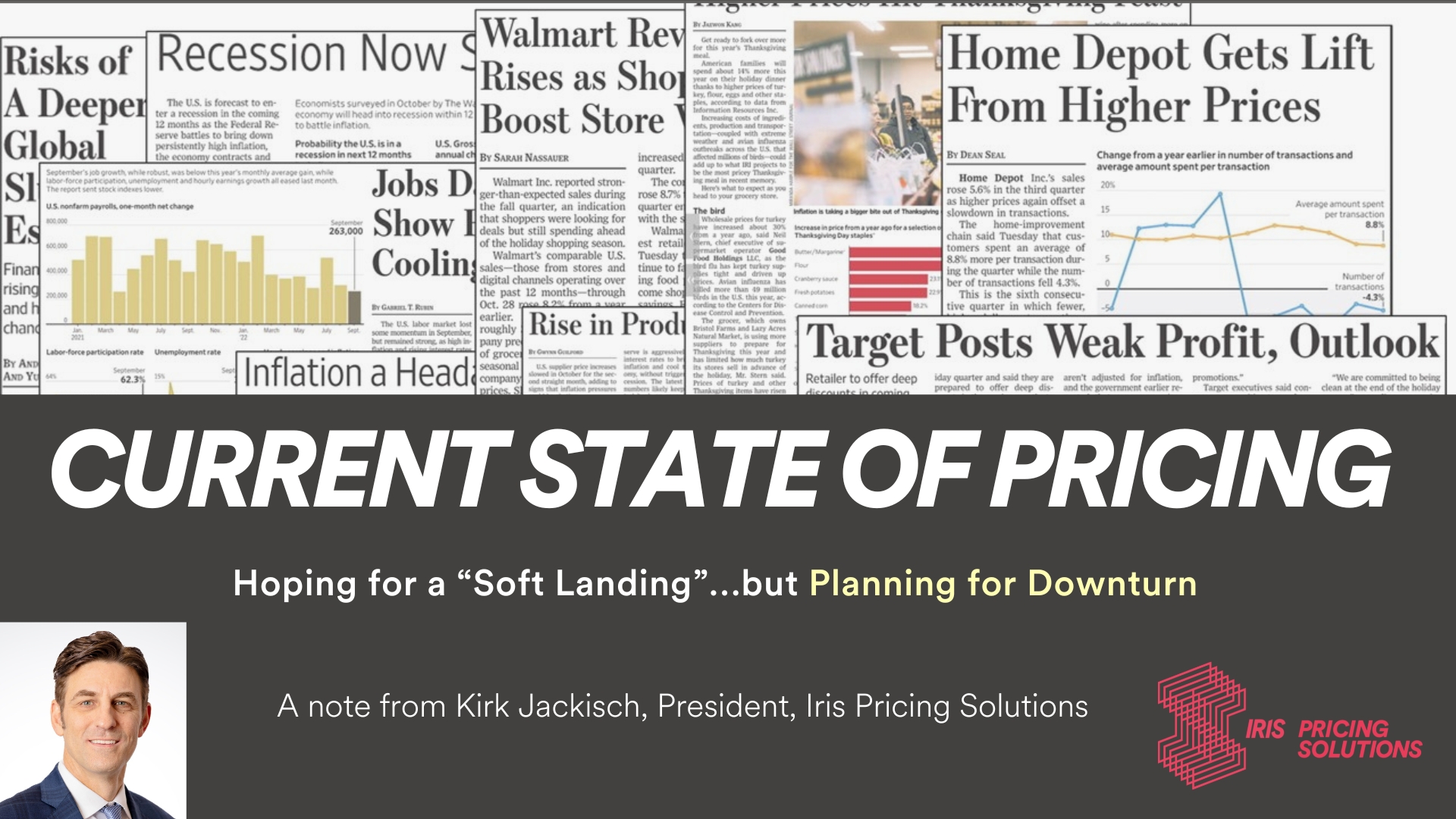A note from Iris Pricing Solutions President: Kirk Jackisch
As we approach the end of 2022, it is clear that pricing leaders will need to navigate a very unpredictable market…perhaps more than ever before. With this uncertainty, leaders must employ resilient, proactive, and competitive pricing strategies.
What We Saw Across Industries
Almost all companies had success in 2022 getting price increases (see article), with most “rediscovering their pricing muscle” (and gaining confidence in the process). Because of the magnitude and suddenness of the needed changes, most pricing actions were across-the-board price increases. In many cases, companies raised prices more than once a year – outside of the restaurant and retail industries, this is almost unheard of. For most businesses, confidence and success were built on the back of very healthy backlogs and almost zero customer cancellations.
Most companies realized high single-digit or low double-digit average price increases. Ironically, these larger-than-normal price increases did not offset the full impact of inflation and supply chain issues resulting in margin dilution and the need for additional future price increases. This is compounded by continued wage pressures which are expected to persist into 2023 as 2022 inflation outpaced wage inflation.
On the consumer side, we quickly transitioned from a rapid increase in spending to “concern” whereby consumers are starting to trade down, with many attempting to stretch their dollar as far as possible. We are seeing Walmart sales up (especially in food), while we are hearing that consumers are still spending on “luxuries” like dinner out…just doing so less frequently. Retailers such as Home Depot are front and center, reporting revenue growth all the while transactions are declining (which is a classic definition of stagflation…and cause for concern).
What does this mean for 2023?
Most agree that customers have “price increase fatigue.” As a result, across-the-board price increases are most likely “off the table.” Therefore, it’s imperative for companies to plan surgical price increases wherever possible, focusing on:
- Differentiated offers where they deliver unique value
- Differentiated customer segments where they are uniquely positioned to deliver value
- High cost to serve areas that can be addressed with fees and surcharges
- Small customers buying the long tail of offers…where price sensitivity and risk are typically the lowest
As we have already covered, most companies still need additional price increases to offset past shortfalls and are expecting continued inflation into 2023. As a result, companies are planning multiple increases in 2023 (vs single annual increase)…with the idea that they can withdraw any midyear increase if either cost increases sufficiently abate or demand starts to fall.
So what can we do to stay ahead from a planning perspective? One of the keys is to monitor your backlog and order cancellations…as these are early warning signs. Although current backlogs remain healthy (from all accounts), they have in most cases pulled back from their peak in early 2022. And order cancellations have returned…albeit at a modest pace. As both return to their pre-2020 levels, companies will need to be ready to adjust plans to ensure business is not negatively impacted by price changes.
Leaders have never faced such a complex combination of volatile conditions across so many segments and geographies at the same time. Iris Pricing Solutions assists companies in developing resilience strategies with goals that are both ambitious and feasible. At the end of the day, we help you reach your business objectives.





